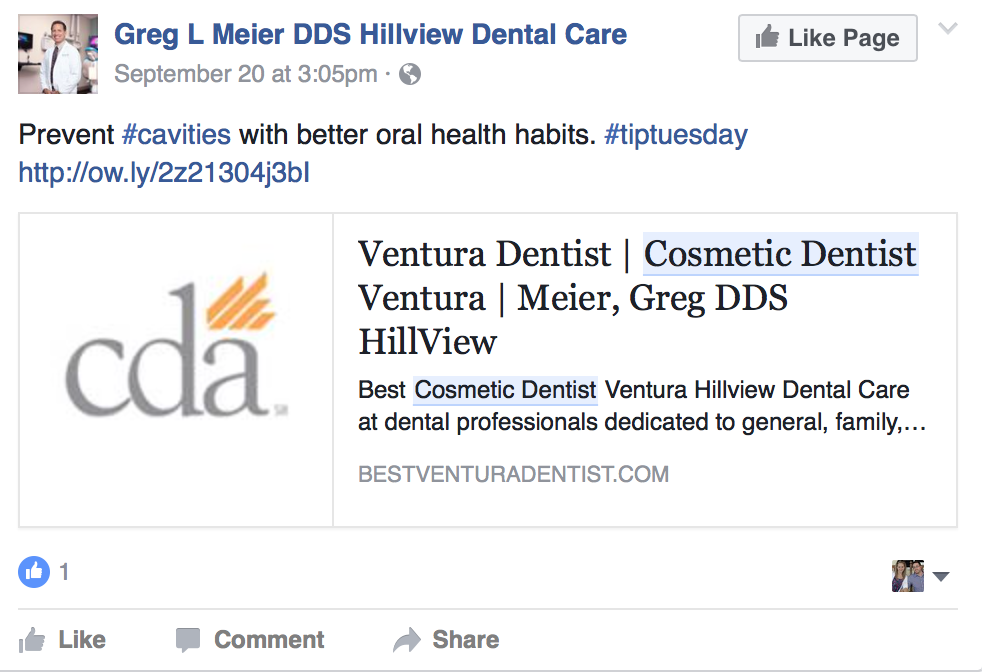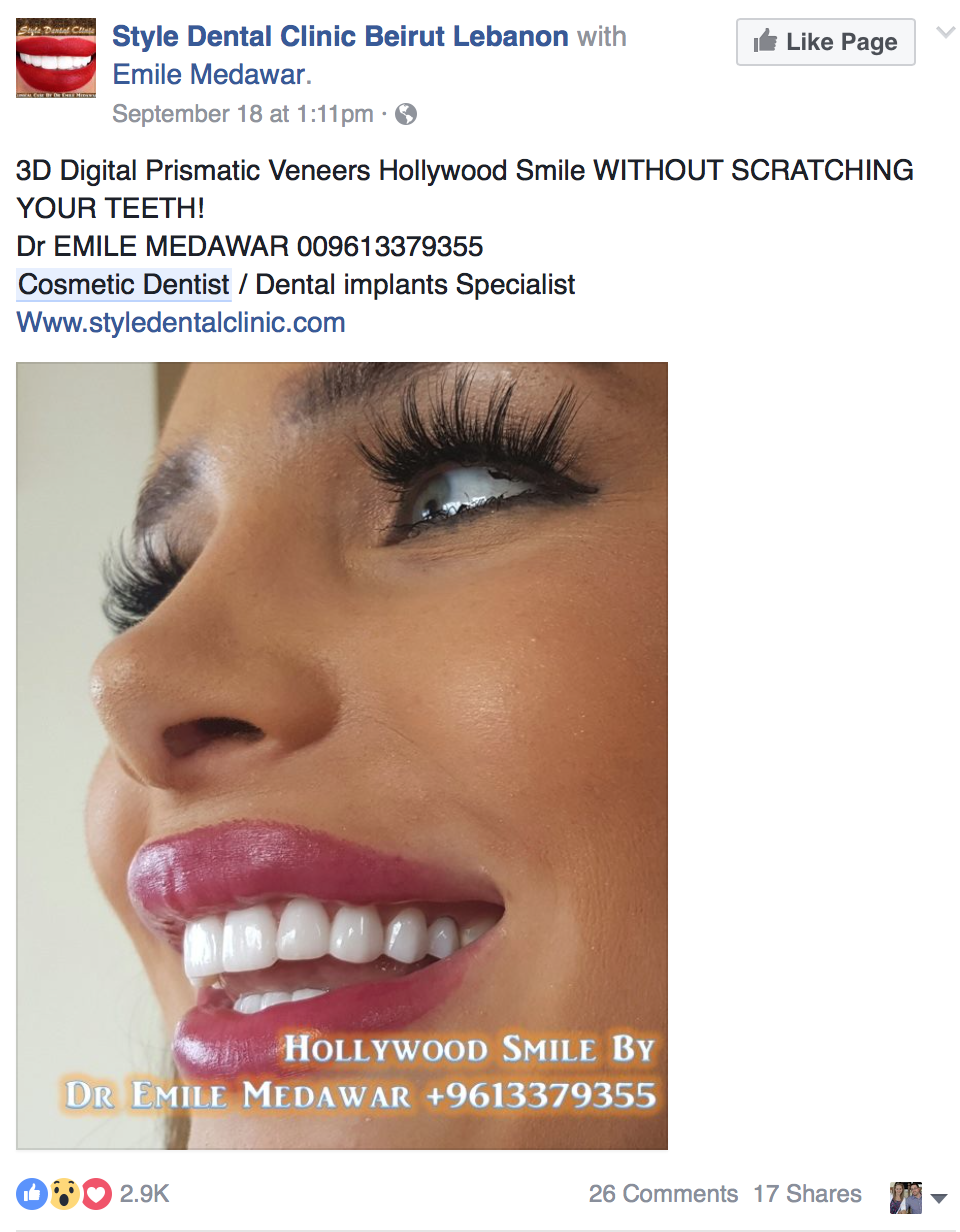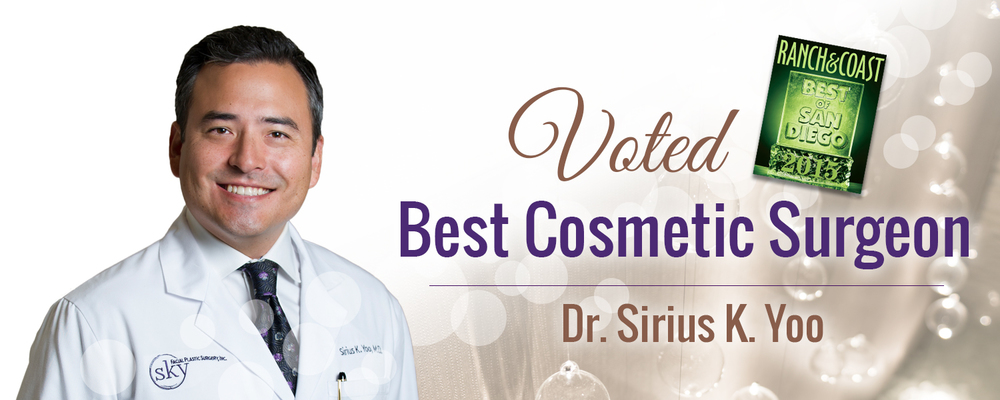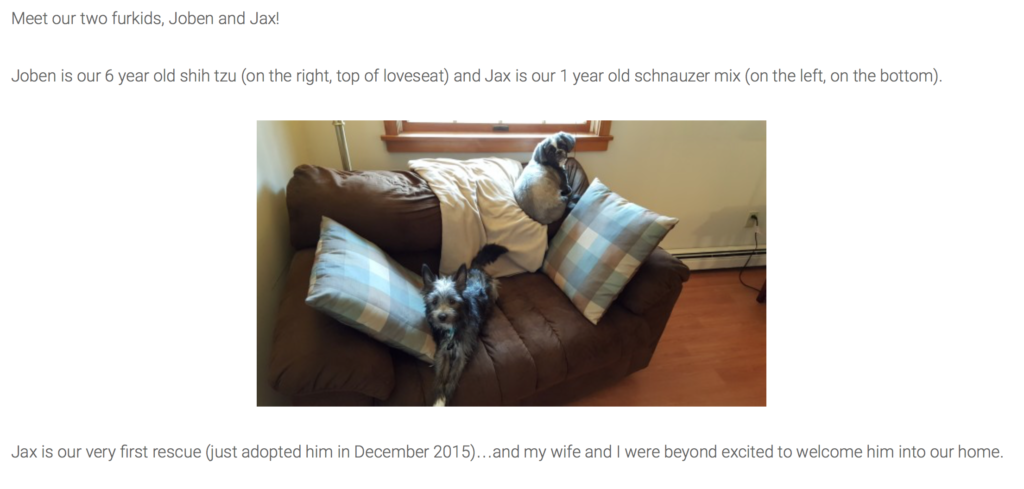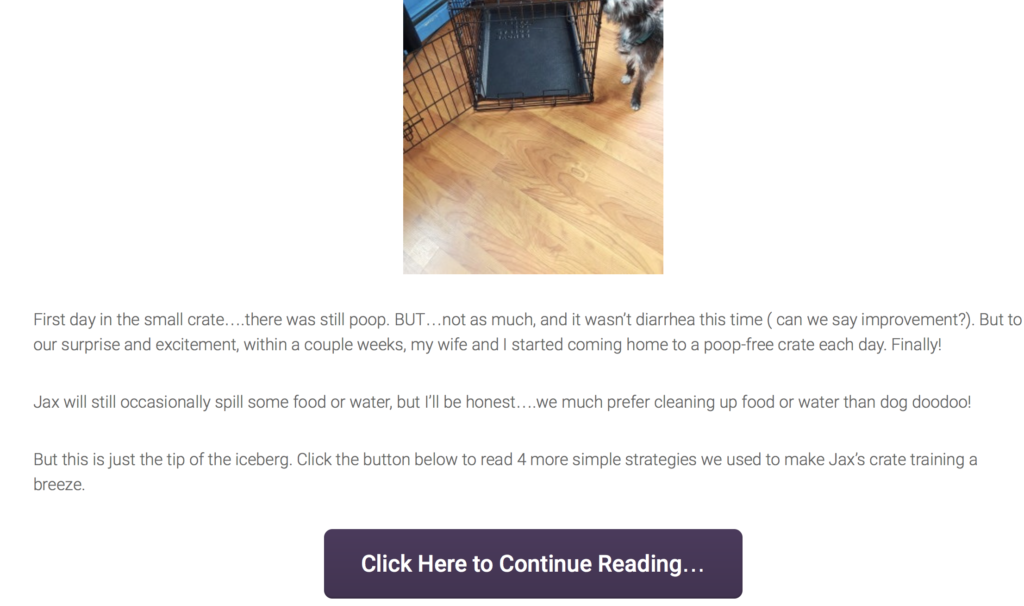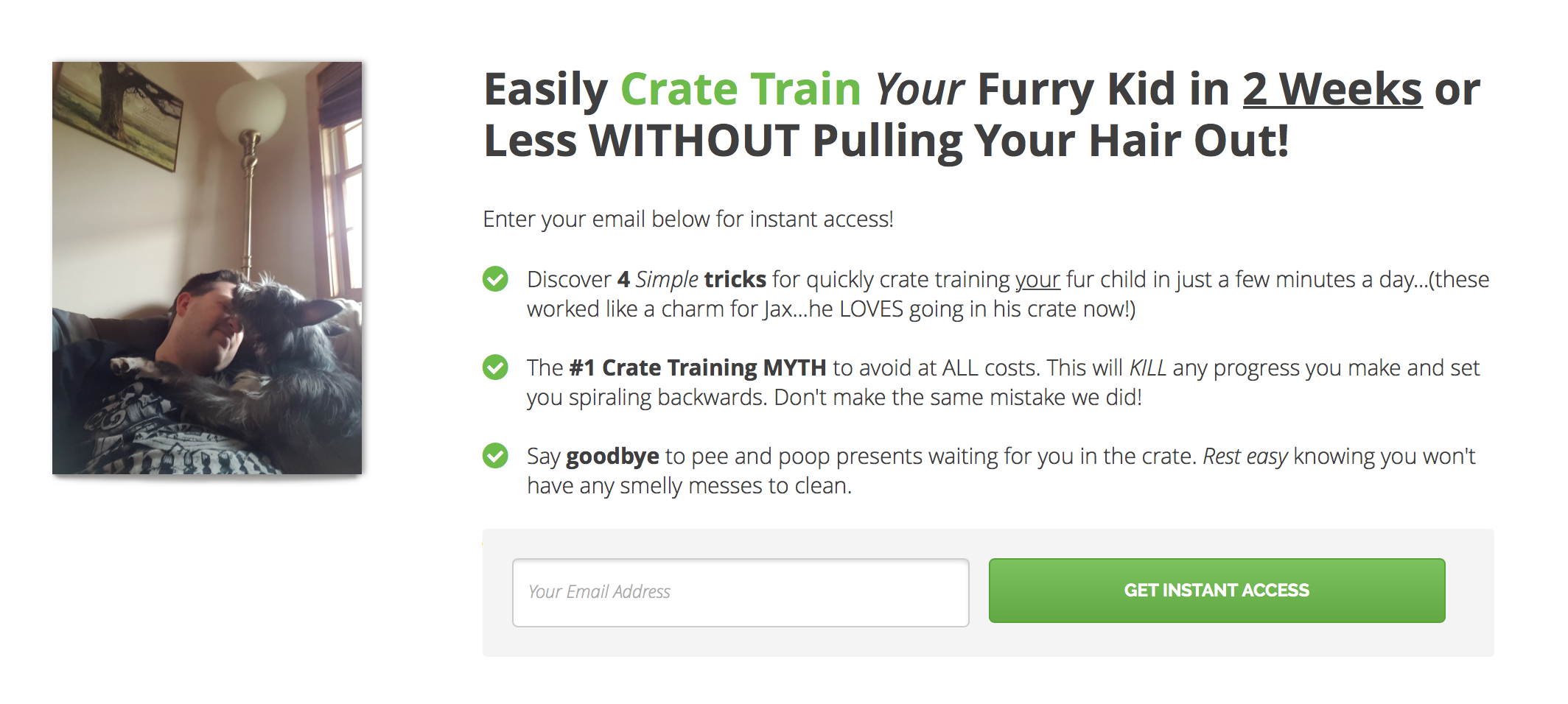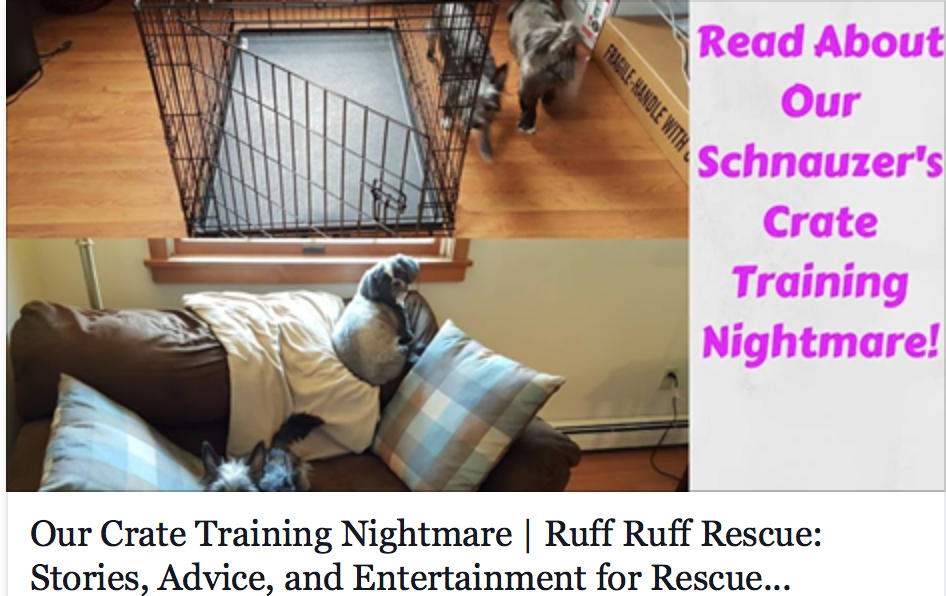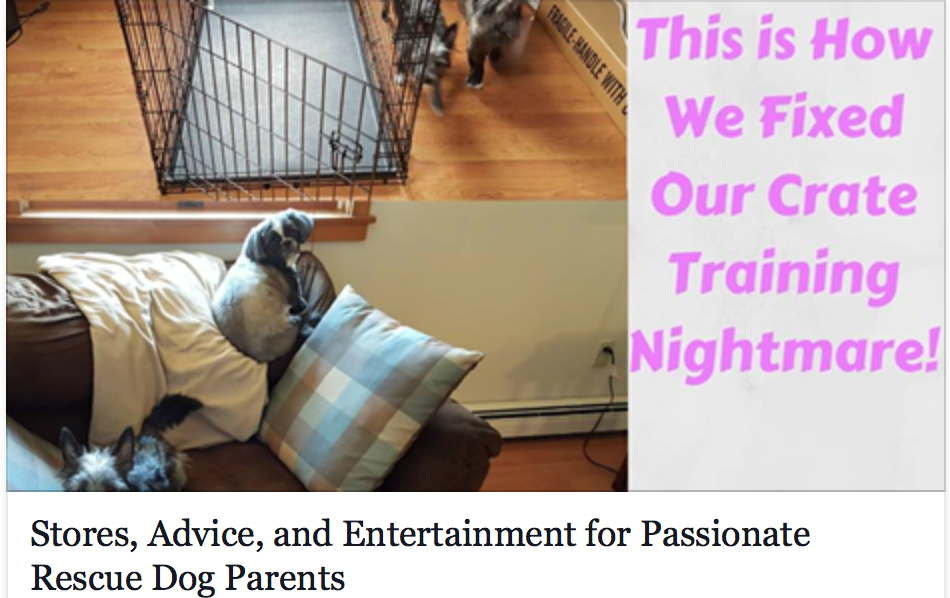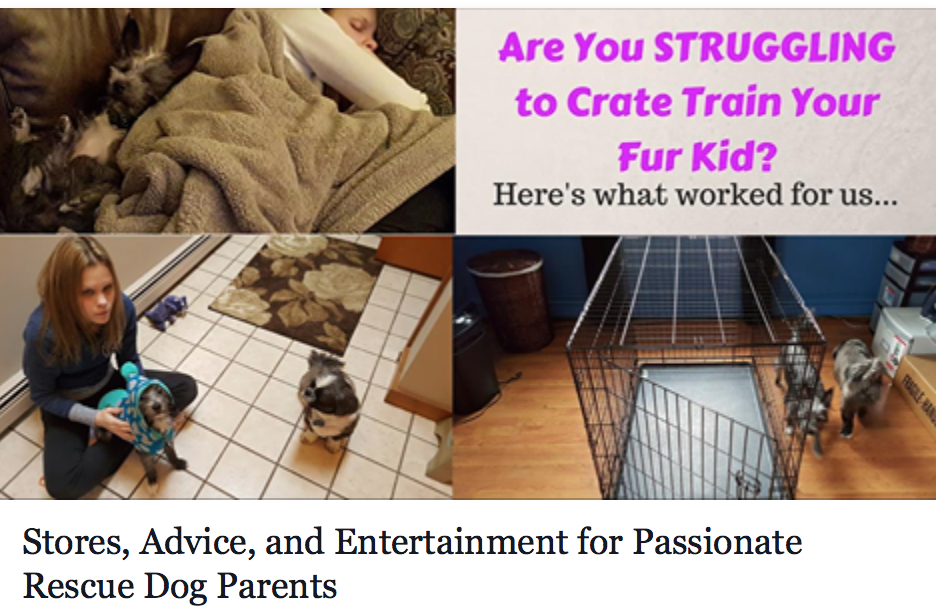Author Archives: Adam Napolitano
4 Simple Steps for Generating Automatic Cosmetic Patient Leads for Your Practice
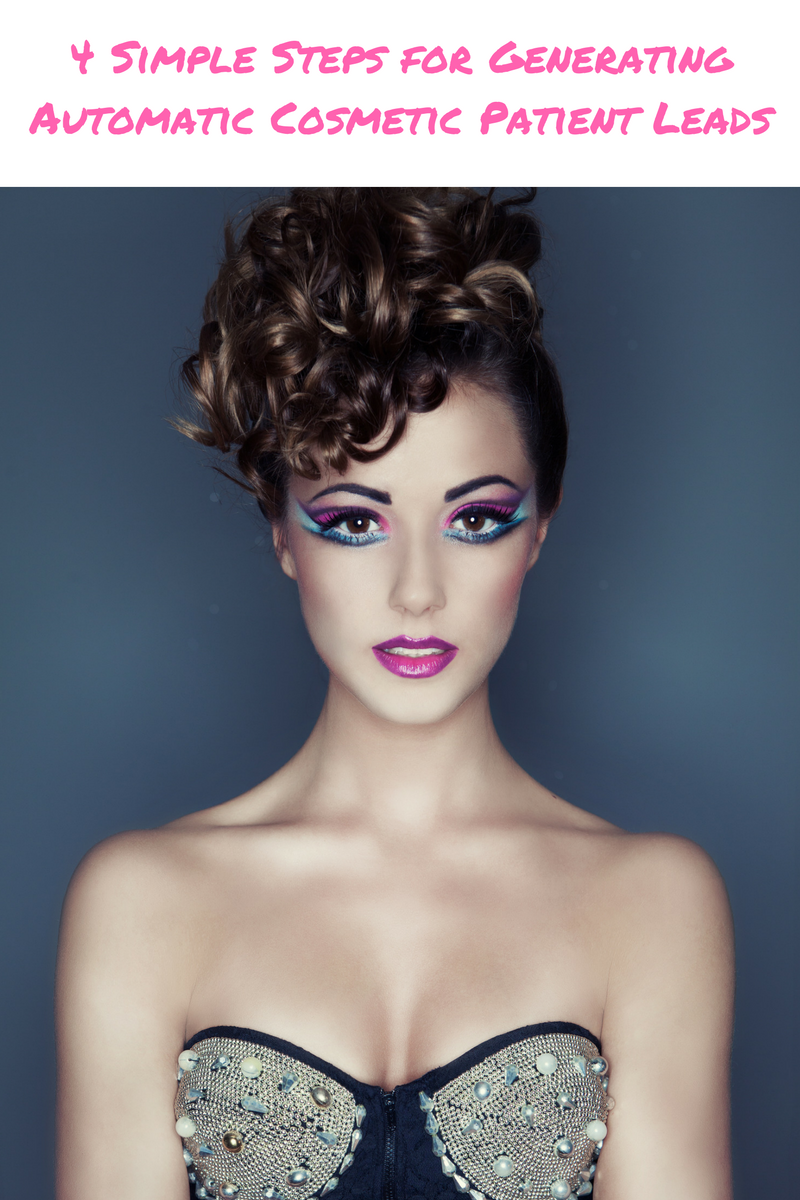
There’s no shortage of ways to generate new leads and patients for your practice if you’re a cosmetic professional.
Whether you’re selling teeth whitening, veneers, botox, or breast implants, there are PLENTY of people right in your community who desperately want what you have to offer. The not so easy part is finding and connecting with them. Even more difficult is connecting with them in a way that leads naturally to the sale.
From TV to radio, direct mail to SEO, billboards to seminars….there’s an abundance of advertising mediums at your disposal. Frankly, it can be hard to choose which ones are right for your practice and will produce the best ROI. And with so many choices…..it’s easy to feel overwhelmed fast!
Today, I want to zero in on 1 advertising medium in particular. This medium allows you to leverage the power of a massive online community where your patients are spending HOURS of their time every single day.
I’m talking of course about Facebook.
*Cue the “not this again” groans*
I understand you’ve probably had Facebook shoved down your throat in the past, but hear me out.
I’m not talking about sharing silly posts on your fan page about proper brushing technique or the importance of a good night’s sleep in keeping your skin youthful. Let’s be honest….no one reads those and would probably prefer to watch paint dry. I’m not trying to be mean, just keepin’ it real. There’s a steaming pile of bad advice out there when it comes to effectively marketing your practice through social media.
So what am I talking about?
Generating hot, fresh leads through sponsored Facebook ads
Facebook advertising allows you to dial in with precision and connect with the people who are most likely to be interested in your services, and present them with a compelling offer. Cosmetic professionals have reported their Facebook marketing efforts as having a positive impact on their practice.
A 2015 study published in the Journal of Plastic and Reconstructive Surgery revealed 57% of plastic surgeons reported a positive to very positive impact on their practice from Facebook.
67% reported increased practice exposure.
And things get even better.
By combining the power of Facebook’s advertising platform with digital technology, it’s now easier than ever to set up an automatic lead generation machine. If set up properly, these little online “ATMs” will drive new patient leads into your practice day after day, month after month.
All you have to do is make sure your receptionist calls these new leads asap to book their initial appointments.
This flow chart reveals the simple 4 step process for creating your own Facebook lead machine. I’m going to break down each step for you in more detail, but first, there’s one more thing you must have in place before you begin. If you skip this critical first step or get it wrong, your lead machine will instantly seize up, failing to churn out quality leads.
Give Them What They WANT!
Your offer will make or break your lead machine. For maximum success, you need to give your audience something they actually want. Seems like a simple concept right? But you’d be surprised how often businesses drop the ball here when advertising.
Don’t get hung up on trying to be clever or creative. Keep it simple.
So what do your patients want?
They want the benefits of your professional services AND to save money! The words “FREE” and “DISCOUNT” are your best friends when crafting a compelling Facebook ad campaign. This holds true even if you serve a higher-end clientele. The Wealthy enjoy saving money too.
So whether it’s 20% off a first teeth whitening procedure or a free breast implant consultation, start thinking about what you can offer your patients. Something of great value that will have them EXCITED to book an appointment.
Emphasize Benefits and Use Emotion
Let’s look at the example of breast implants. Why do women get breast implants? Why is this something they want? If your sarcasm is getting the best of you, “Umm, because they want bigger breasts…” might be your answer.
But let’s dig deeper. Why do women even want bigger breasts?
There could be a number of reasons. Maybe they feel self-conscious about the size of their natural breasts. They crave more confidence with their appearance. They want to feel more attractive and desired by potential mates. They lust to feel comfortable in their own skin and embrace their femininity. Maybe they work in the modeling or acting industries and equate larger breasts with more job opportunities.
And the list goes on. These are just a few possible examples. Here’s the point I’m trying to make: Don’t be afraid to stir up the right emotions in your audience. And the first step to triggering an emotional avalanche in the mind of your prospects is acknowledging their fears and desires in your marketing.
For our purposes, this means the language we use in our Facebook ads, and the web page they land on after clicking the ad. Always remember, people BUY based on emotions….not logic.
When dealing with people, let us remember we are not dealing with creatures of logic. We are dealing with creatures of emotion, creatures bristling with prejudices and motivated by pride and vanity.
Dale Carnegie
Step 1: Crafting Your Facebook Ad
Advertising on Facebook offers incredible opportunity for your practice. Their platform allows you to use eye-catching images or video and still dial in your audience with precise interest and demographic targeting.
The single most important element of your ads are the images. The saying “A picture is worth 1,000 words” definitely rings true here! The image is what your audience will see first. It must grab their attention. If your image does it’s job, people will pause long enough to read your offer and decide if they want to click. More clicks on your ad = More leads collected = More new patients for your practice!
No more equations for the rest of this post….I promise!
So what makes for an appealing, attention-grabbing image?
- Relevant to your offer
- Features people (attractive women tend to work well)
- Bright color accents (i.e.: bright shirt, red lipstick)
An important note on bright colors: Don’t go overboard! Too much “in your face” color can turn off your audience and work against you.
Let’s take a look at a couple image examples I found on Facebook.
Bad Image Example:
Hopefully, it’s obvious why this makes for such a bad image. We have a bland, 3 letter logo. This does nothing to grab attention or speak to people’s emotions. Anyone who comes across this post in their newsfeed will keep scrolling right along, without giving it a second thought. You can see this post had only one like and no comments at the time I took this screenshot. Virtually no engagement which is not surprising!
Now let’s take a look at an image that does a better job at hitting the mark.
Good Image Example
Dr. Medawar is rocking it with this one!
This is a great image for the reasons we just talked about:
- It features a beautiful, white smile, making it relevant to his cosmetic dental practice
- It showcases an attractive woman
- It contains a nice pop of color with the woman’s pink lipstick. Not to mention the teeth/lips are featured prominently in the photo
This image will be very hard to ignore for someone who’s interested in cosmetic dental work. And take a look at the engagement on this post. Nearly 3,000 post reactions/likes, 26 comments and 17 shares. With that level of engagement, it’s likely this post was sponsored at some point. But engagement isn’t our primary concern here. All we care about is generating quality leads for your practice!
Now that your ad image is taken care of, the next step is to craft some compelling copy for your ad. This copy or text will help persuade people to click your ad to learn more about your practice or offer. The best ad copy will address concerns or appeal to desires of your audience.
Take another look at the text in Dr. Medawar’s ad:
Notice he’s advertising 3D digital prismatic veneers and uses the phrase “WITHOUT SCRATCHING YOUR TEETH!” Patients considering veneers may worry about scratching or discomfort to their teeth during the procedure. This ad copy is helping to put that fear to rest. Of course you must be careful what you say when advertising as a medical professional.
You never want to make misleading claims, even if unintentional. For example, making a statement like “Our veneer application procedure is completely pain-free!” probably isn’t the best idea. Sensitivity to pain may vary greatly from one patient to the next.
Another critical part of your ad copy is your call to action. This is where you clearly state your offer and instruct your audience on what to do next. Take a look at the ad below:
Take note of the last sentence: “Download our fact sheet for more information on cosmetic smile makeovers.” It’s clear their offer is a free fact sheet. They tell their audience how to access it by downloading at the link they provide. Straightforward and simple. You want to do the same thing with your offer in your ad.
Step 2: Writing a Compelling Landing Page
Once you get someone to click on your ad, the next step is selling them on your offer. Usually, your audience won’t have to buy anything yet. Since the purpose of this ad campaign is to generate new leads, you’ll be asking them to fill out a form with their name, phone number, and email address. An effective landing page will do the following for your prospects:
- Agitate their biggest pain points.
- Trigger the right emotions.
- Emphasize benefits of your service (or product).
- Present a valuable and compelling offer.
- Make a clear call to action.
- Create a sense of urgency/scarcity.
Don’t fret over design. Often plain and simple landing pages convert the best. You want to focus on communicating a persuasive message. Don’t worry about fancy graphics or sleek web design.
Another powerful tool that will boost the number of leads you generate is social proof. When people are considering a cosmetic procedure, they want to see results and experiences from other patients. So if your state allows use of patient testimonials in your advertising, use them to your advantage!
The best testimonials give concrete/specific results. These are more compelling than testimonials that are general or vague. Caution not to accidentally mislead your audience. Â You may want to include some type of disclaimer such as “Your results may vary” or “Results not typical”. However, I am not an attorney and cannot give legal advice. The best course of action is to run any new ad campaign by your legal counsel first before going live.
Don’t forget to put a face to your name. When people are considering a cosmetic procedure, they want to know about the doctor. Take some time to talk about your qualifications and select a professional photo of yourself with good lighting. Here’s a nice example:
Notice how this image features an award won by the doctor. Showcasing relevant awards or honors can help build trust and elevate your perceived credibility. These are all things you want to keep in mind when creating an engaging landing page. If you do it right, you’ll have no problem generating fresh new leads for your practice consistently.
Step 3: Collecting Leads
After you’ve sold prospects on your offer and yourself, you need a way to collect their information for follow-up. There are many ways you can do this, but I’ll share a couple easy options I like to use. If you have your landing page set up on a WordPress website, you can install a plugin to collect your leads’ contact info.
One great plugin for this purpose is Wufoo Forms. They make it easy to embed forms on your web page. No coding, no technical knowledge required. For most of these lead generating campaigns, you’ll only need to collect name, phone number, and email address. Plugins like Wufoo are great, because once someone fills out your form, you’re automatically notified via email. This allows you to quickly call up a hot new lead and get them in the books for an appointment.
Another option is to use lead objective ads in Facebook. This allows you to bypass creating a webpage hosted on your own website. After someone clicks on your ad, they are automatically directed to a simple lead collection form hosted by Facebook. This may be a simpler option, but customization is lacking compared to using your own website.
Email autoresponders have web form capabilities too. Truthfully, you have many options here. Choose whatever is easiest and makes sense for you. Don’t let the fear of user-friendly technology hold you back. Depending on your level of experience, there may be a slight learning curve. But I guarantee you are fully capable of doing this if you’re willing to invest a little time.
Step 4: Close New Appointments!
This is the fun part! You’ve put in the hard work, blood, sweat, and tears (hopefully not too many tears!). Now it’s time to reap the fruits of your labor. If you’ve done everything correctly like I outlined in this post, you should have a consistent stream of people submitting their information through your web form.
Now it’s time to get on the phone and close them! Remember, these are people who raised their hands, saying they are interested in your offer, so don’t be shy! Time is money when responding to new leads from the internet. Consider this jaw-dropping stat from Inside Sales:
If you follow up with web leads within 5 minutes, you’re 9 times more likely to convert them.
InsideSales.com
This is why it’s so important for your receptionist to stay on top of new leads as they come in. If you use the right technology like I talked about, this is easy to do. Many platforms have an instant notification feature via email or text message to let you know you have a new lead. Make sure you follow up with every lead as quickly as possible to dramatically boost your conversion rates.
Persistence pays. Many times, your receptionist won’t be able to reach a new lead on the 1st or 2nd call. But this doesn’t mean they should give up! Often, it takes up to 6 phone calls to connect with and convert a new lead into a scheduled appointment.
93% of converted leads are contacted by the 6th call attempt.
Velocify
If you haven’t done this before, you might be wondering what your receptionist should say when they call these people. Keep it simple. Assume they want to schedule an appointment to come in and see you. Here’s a sample script:
Hi Jen! This is Liz calling from Dr. Smith’s office. We noticed you just signed up for a free breast implant consultation online. When would you like to come in to see Dr. Smith? We have (Date 1) and (Date 2) available. Which works best for you?
If neither date works for them, settle on an alternative time that does. If they waffle, or say they’re not ready to schedule an appointment yet, find out why. What concerns or questions do they have? Your receptionist could even start going into the most common questions you get from your patients.
Think about what else you can do to help them make an informed decision. Is there any literature or newsletter you can send them? Maybe you have a free eBook or video interview that will help. People will remember when you go the extra mile to help them. This builds trust, and even if they’re not ready to schedule an appointment now, there’s a good chance they will come back to you in the future when they are ready.
Skip the Learning Curve, Hire an Expert
I hope you realize the power of the information you have at your disposal. You have the exact, step-by-step blueprint for creating a well-oiled Facebook lead generating machine. Imagine having hot new leads flowing into your practice every day, week, or month. All while you continue doing what you do best as a skilled cosmetic professional.
You can do this if you take action and have patience. I’ll be honest in saying that patience is key here. You might not hit the mark right out of the gate with your offer, ad, or landing page. You must take the time to test and adjust your campaign as you go along.
But if you’re like most professionals, time is a luxury you may not have. That’s where I come in. My team and I can take care of this for you. You get fresh leads and new patients every month, while not having to lift a finger. Really the only part you have to worry about is making sure your receptionist calls up your new leads to book appointments. We take care of the rest.
I’d like to invite you to schedule a Free 45 Minute Discovery Consultation with me personally. We’ll talk about your practice and your goals for growth moving forward. We’ll talk about how to set up a Facebook lead machine for your own practice. You’ll have the opportunity to pick my brain and ask your most burning questions. And at the end if I think we’d be a good fit, I’ll make an offer for us to work together.
That’s pretty much it. Transparent, low key, no obligation. Regardless if we wind up working together or not, my goal is for you to leave our consultation with new clarity on how to successfully generate new leads online for your practice. Click the button below and fill out the brief web form. Then I’ll reach out to you via email to schedule our consultation together. Slots are limited.
You’ll need to set aside at least 45 minutes for this consultation. Please make sure your schedule is clear for this call. If for whatever reason you need to reschedule, please email adam@writinginfire.com 24 hours in advance. I look forward to connecting on our call!
Sign Up for Your Free Consultation
Stop Talking and LISTEN
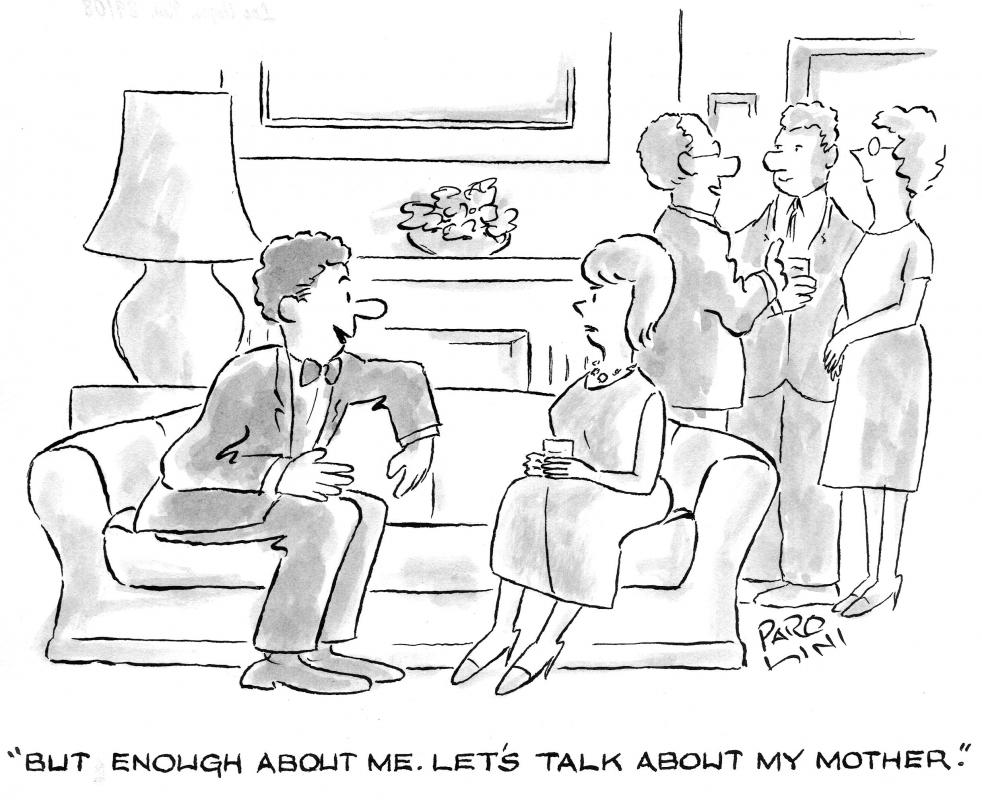
I’m definitely an introvert. Most of the time I’m happiest relaxing at home with my wife and our two furry children, Joben and Jax. You won’t find me at the bar every weekend or attending dinner parties. And speaking of parties, I am not the “life of the party.” Never have been and probably never will be…and I’m ok with that.
As an introvert, I’ve naturally become a good listener. I may not like to speak much, but I love to play the role of listener. I don’t know if this is the case for all introverts, but I feel it applies to me. Over the years, I’ve developed an interest in observing (ok, I guess you can say eavesdropping) on other people’s conversations.
Sometimes, sure, it’s because I’m nosey and trying to get  the scoop. But other times, I pay attention to the dynamics and structure of conversations.
And in most mundane, social interactions, I’ve noticed one common theme I like to call “The Pendulum Effect”.
Person A: “I just tried this new chicken piccata recipe last night for dinner…..it was sooo good!”
Person B: “Cool….I ordered out for pizza last night. I was too exhausted to cook after picking the kids up from practice.”
Person A: “Yeah, I was surprised how easy the recipe was to follow….really didn’t take too long.”
Person B: “Honestly, I’m not a big fan of Luigi’s pizza, but the kids love it, so we always go there.”
Person A: “Tom loved the recipe too, I’ll definitely be making it again soon.”
Person B: “Just once, I wish we could try pizza from somewhere else…”
Sound familiar? Notice how each participant brings the conversation back to them when it’s their turn to speak again. You essentially have two people taking turns talking about themselves while ignoring what the other person is saying.
For meaningless social pleasantries, this doesn’t matter….and let’s be honest, who really gives a damn? If two people are happy engaging in a conversation this way, who am I to say they shouldn’t?
But in the business world, this can cost you customers and clients.
It’s true. In business, it’s ALL about our customer. Their needs, their desires, their problems, their passions. If you let yourself get caught up in the pendulum mindset, you’ll lose sales. Your voice and messaging won’t convey the sincerity and sense of caring your audience craves.
And to be clear, this does NOT just apply to face to face conversations or over the phone. This applies online too. I’m sure you’ve observed the “pendulum effect” in action on social media, where an abundance of online business is conducted.
Here are 3 simple tips for avoiding the deadly pendulum and engaging in customer-centric conversations:
-
Stop Talking so much
This includes thinking about what you want to say next. Remember, the conversation should center around your potential customer or client. For this to happen, they need to do most of the talking.
-
Relax and Listen Intently
Allow yourself to relax by not having to memorize a “script” for the conversation. This can apply to sales and non-sales conversations. Yes, it’s ok to have a general structure to follow (especially for a sales convo), but don’t force yourself into reciting the same lines like a robot….regardless of the responses you receive from the person on the other end. Instead, focus on listening to what the other person is actually saying, and respond accordingly.
-
Ask Follow-Up Questions
Asking follow-up questions is the best way to keep the interaction focused on the other person. Avoid close ended questions and ask open ended questions to keep the dialogue flowing smoothly. An example of a close ended question would be: “Are you trying to get customers with your website?” This allows for a simple yes or no answer, halting the conversation. Instead, ask this question in an open ended way, something like “How are you trying to get customers from your website?” Or “What are you doing to get customers from your website?”
Obviously we need to talk about ourselves and our businesses at some point, just remember to keep it to a minimum, and only when necessary. I’ll leave you with this wise quote from Mark Twain:
If we were supposed to talk more than we listen, we would have two tongues and one ear.
How to Use the Fear of Loss to Write Powerful Copy and Advertisements
Watch the video below to discover how to use fear of loss to write powerful copy. This applies to virtually all content you produce, including your website pages, blog posts, social media posts, sales pages, and advertisements.
A Cool Tool to Figure Out What Your Audience Wants….and GIVE It to Them!

We’re all competing for the attention of our audience, of our ideal customer. No matter how obscure your industry or market, the fact is competition still exists and always will exist. Consumers today are relentlessly bombarded with advertisements and marketing campaigns.
This is the case throughout all advertising mediums, but especially true in the digital world online. Email is the cornerstone of relationship marketing, sequentially leading consumers through the journey from prospect to buying customer.
But how do we go about getting members of our target audience on our email list in the first place? The short answer, is we need to give them something of VALUE. Basically, we need to give them an ethical bribe.
The most effective way to do this is by offering something that helps solve a glaring problem or provides a specific benefit. Lead magnet is a common term you see used in the marketing community. This can be delivered many ways: an eBook, video, email series, podcast, webinar and the list goes on.
Ok, so we know what type of media we can provide as our “ethical bribe” to get someone on our email list, but what content should we provide in the process? This is where things can get tricky. In our minds, we may “think” we know what our target audience wants, what content they crave and will ravenously devour. But assumptions are not enough, and they can be downright dangerous. Why waste hours of time and hard earned dollars creating content that our audience could give two hoots about?
If you want to maximize your chances of success and hitting a home run right out of the gate, you need some data to support your ideas. A great tool to quickly gather some of this data is BuzzSumo.
Here’s how it works: you type in your niche/topic and hit search. BuzzSumo then pulls up popular pieces of content relating to your niche that have been widely shared on social media. It even gives you an estimate of how many times each piece of content has been shared. Obviously the more shares, the more popular the content.
And it doesn’t take a genius to figure out that if something is popular or goes viral on social media, it’s probably something that your audience actually cares about or enjoys. Did the light bulb in your noggin just turn on? I sure hope so! Because now you can use this data to create your own content. You know what specific topics or information resonates with your audience. The guesswork is gone.
Let’s take a look at an example.
I went over to BuzzSumo.com and searched the phrase “dog training tips”. Below is a search result for Top 10 crate training tips that’s been shared 9,500 times on Facebook:
If you’re targeting people interested in “dog training tips”, this is an article you want to pay attention to and borrow from. You can click the link to open the article right up.
“Dog training tips” is still pretty broad. So let’s try getting more specific, and search for the term “stop barking”. Here’s an interesting result that turns up:
As you can see, this article from the Humane Society about how to get your dog to stop barking  was recently published and has already been shared over 7,000 times on Facebook. You would simply read the article, and take note of what topics and information they talk about. If you’re creating a lead magnet targeting people who want their dogs to bark less, you’ll want to swipe info from this article for your own content.
It goes without saying you never should plagiarize or just “copy and paste”. Instead, put your own twist on their content using your own words and in a context that applies to your specific audience.
Creating a savory lead magnet or “bribe” to entice people to sign up to your email list doesn’t have to be torture. Thanks to simple tools like BuzzSumo, we can know with certainty what type of content our audience loves to consume.
FYI, this doesn’t just apply to creating a lead magnet for email subscribers. You can use tools like this to create products to sell too. With a little thought and creativity, the possibilities are endless! Are you excited yet?
Article Lander vs. Squeeze Page: Which Generated More Email Subscribers? (My Niche Case Study)

If you’re reading this right now, I’m assuming you already understand the importance of building an email list….regardless of what type of business you operate.
Email List + Value Delivered = Paying Customers (I hate Math…but I LOVE that equation, and so should you!)
If you’re still not building an email list, you should be ashamed of yourself. But your ignorance is forgiven, since you were nice enough stop by and read my post….which will definitely be worth your while. There are many ways you can get people to sign up to your email list, but I’m only going to focus on two of the biggies today, the article lander and the traditional “squeeze” page.
The article lander is an “informational or educational article” about your topic. The goal is to share solid information that provides value to your prospects. Then at the end of the article, you include a CTA. This can be to purchase your product or sign up to your email list, among other things.
The traditional “squeeze” page is much simpler. You have a catchy headline, a few bullets of compelling copy about your free offer, and a sign up form. That’s pretty much it. When I see squeeze pages like this, I always think of the hype-filled, blind-copy internet marketing style squeeze pages.
You know the ones I’m talking about….
Outrageous claims like “Free eBook reveals how 92 year old Granny with a bionic hip makes $12,947/Month working just 20 minutes a day crocheting mittens.”
A little over the top? Well, you get my point then, lol.
Obviously not all squeeze pages need to be like this…and if done correctly, they can still be very effective.
I recently started a blog sharing our journey so far with our sweet furry kid Jax who we adopted in December last year. I share some stories and advice for other rescue dog owners who might be going through some of the same problems.
Since I know how important it is to build in email list in any niche, I set up a small funnel and some Facebook ads to start sending traffic. During the course of my testing, I compared an article lander vs a traditional “squeeze” page to see which would result in a higher email sign up rate.
Image snapshots from my article lander:
I had about 750-800 words of content, sharing our own crate training experience and providing some value before moving in for the kill. When a prospect clicked on that purple button to continue reading our 4 crate training tips, it would prompt them to enter their email address.
Image Snapshot from my “Squeeze” Page
Simple…not much to explain here.
Now for the $1 Million Question…
Which page performed better in generating email subscribers?
The winner was the traditional “Squeeze” page. Not only was the opt in rate higher, but the average time spent on page was higher too. This was really unexpected because there’s hardly anything to read on the squeeze page versus 800 words of content for the article lander. It was clear due to the lower time on page that people were not reading much past my headline and first couple sentences for my article lander.
Here’s my takeaway from this case study and something you should always remember for YOUR own business…
Don’t Assume Shit….Test, Test, and Test some More!
I had been reading a lot lately about how traditional squeeze pages and lead magnets were “dead”, and the way of the future for building email lists online was article landers or advertorials. FYI, in case you don’t know what an advertorial is, it’s basically the same thing as an article lander, only written in more of a news-storyish tone.
If I only followed what I had been reading from other experts, I may have never attempted the traditional style squeeze page for my dog blog. I may never have seen my opt in rate nearly triple with a few simple tweaks.
Don’t fall into this trap. Even if advice is coming from a respected authority, don’t always take it as gospel. Keep an open mind and be willing to test things for yourself. When it comes to PPC advertising, if you think you can just throw up 1 ad, 1 landing page/squeeze page, 1 funnel and set it and forget it, then you are sorely mistaken.
I’ll leave you with this gem of a quote from the advertising man himself, David Ogilvy:
Never stop testing, and your advertising will never stop improving.
Your Story vs. “What’s in it for Me?” (A Brief Case Study)

Tell your “story”…
Share your story with the world (or at least your target audience)…
This is the mantra we see and hear repeated over and over by brand strategists, copywriters, and marketing consultants. And you better believe I’m guilty of this too!
Here’s the thing….sharing your story in an authentic way is critical to growing your brand. This is a key ingredient in amassing a loyal following.
And let’s be honest….telling a good story can work wonders for your sales copy.
But before any of this can happen, people need to find you. They need the chance to read your sales page, to sign up to your email list, to read your blog post, or consume whatever content you’re putting out there.
And unless you’re getting consistent referrals or free viral traffic, this all starts with your PPC ads.
I want to share with you a recent example of 3 Facebook ads I created to promote my new rescue dog blog. I started this as a hobby, since my wife and I are both crazy dog lovers, but will be monetizing with our own products soon.
The ad images you’re about to see sent people directly to a squeeze page offering free tips on how to successfully crate train their “furry friend”.  I also shared the story and struggles we encountered trying to crate train our own dog that we recently rescued.
Here’s Facebook ad image 1:
Facebook Ad Image 2
Facebook Ad Image 3
Guess which ad led to the highest opt in rate?
If you guessed #3, then ding ding, we have a winner! In fact, my opt in rate increased 2.9 fold from ad 1 to ad 3. My opt in rate was really low to start, so it wasn’t too difficult to get almost a 3x increase.
Breaking it Down
Why do you think ad #3 performed best, while ad #1 shit the bed? The answer goes back to sharing your story vs. “what’s in it for them?” In the first ad, I was too focused on “me”. I was excited to share our own story of how frustrating it was to crate train our dog.
I forgot to make it about my audience. The wording in ad #1 invited people to read about our crate training experience. This probably attracted people who enjoy reading about funny or interesting dog stories, but these weren’t necessarily people having trouble crate training their own dog NOW.
As a result, my opt in rate was in the toilet.
Ad #2 was better, because I was now advertising how we fixed our crate training nightmare. This was more likely to generate clicks from people struggling with their own crate training issues than ad 1.
Ad #3 was best, because I spoke directly to my target audience; people who were currently struggling to crate train their own dog right NOW. These are people who were really feeling the pain, and in search of solution.
The result? Huge jump in my opt in rate!
The Takeaway
Use your ad to appeal to the pain or problem your audience is experiencing in that moment. Make it about them, and how you will help solve their problem. It’s easy to get wrapped up in the romanticism of our own story and experience, but save this for your landing page or blog post or email series after a prospect has clicked your ad.
As long as you’re delivering on what’s promised in your ad, you can now weave in your own personal experience to give more authority and authenticity to your content.
How Batman Affects Your Business…

WHY BATMAN?
As a kid, I was terribly shy. Seriously, getting me to talk was like pulling teeth. I only had one friend growing up, and he was the “smelly†kid in class.
Yep, Robert (the smelly kid) and I were best friends for the longest time. Mainly because he was nice, and about the only other kid my age who made me feel comfortable.
I used to go over to his smelly house where his smelly, drunk dad would lay passed out on the couch. Robert and I would play with GI Joes, Ninja Turtles, and Ghostbusters. On occasion, we would fake wrestle WWF style (yes, it was still WWF back then), to see who could execute the better Stone Cold Stunner.
But aside from Robert, I felt painfully out of place in all other social situations.
I was extremely self-conscious and terrified of saying something that might make me sound like a loser or dork in front of my peers. So for me….the natural solution was to just not say anything.
My anxiety was so bad that I constantly felt nauseous. I could never eat, and it always felt like I had a massive lump stuck in my throat. I could only find relief by removing myself from the situation and retreating to the comfort of solitude (which I was far too familiar with).
It didn’t help that I was a total bookworm either.
At one point in 5th grade, my parents got really concerned because I was spending so much time studying. They actually set a meeting with my teacher and wanted to know why I was studying 4 to 5 hours every night (when in reality, we only had maybe 1 or 2 hours of homework on average). So while most parents were probably pulling their hair out trying to get their kids to do their homework….I constantly had my nose buried in a text book.
Now don’t worry, I’m not looking for pity here…
As I got older and progressed through junior high, high school, and college, I started coming out of my shell more and more.
Today, I can proudly say that I have friends with good hygiene who DON’T smell, and I am blessed to have married the love of my life.
But enough about me. Let’s get back to what I started this post with….WHY BATMAN?
Why does Batman have such universal appeal as a superhero?
Why has he earned intense admiration from so many people?
Because he’s relatable. It’s easy to see pieces of us in him, and pieces of him in ourselves. He’s real, he’s human, he’s visceral, and at times dark.
But perhaps most importantly of all…he’s FLAWED. Just like you and me. And openly sharing flaws or failures is an endearing quality that goes a long way in building trust and credibility. In the movies, his flaws are exposed and bare for the audience to see. Just like I struggled with social anxiety, Batman had his own fears too.
Batman Begins comes to mind, where Batman/Bruce struggles with his fear of the bat-infested well he fell down as a child at Wayne Manor. He then goes on to confront and defeat this fear as an adult, which symbolizes the birth of “Batmanâ€.
>>> How “relatable†are you in the content and messaging you deliver to your audience? Are you openly sharing your story, flaws and all?
If this is something you struggle with, I would LOVE to help you.
Whether it’s on your website, sales letter, blog post, LinkedIn Bio, lead magnet, or email sequence, I will help you share your story and communicate with your audience in your authentic voice.
I’ll help you connect with your customers in a way that deeply resonates with them on an emotional level, quickly building trust and loyalty that lasts. And of course in a way that brings in more sales, customers, or clients.
If this is something you’re interested in, send me a private message or email me at adam@writinginfire.com.
Briefly tell me your “story†and how I might be able to help you with your content needs. We can always schedule a Skype call if necessary to see if we’re a good fit.
To Your Success,
Adam Napolitano
P.S. I want to try something fun. In your email or PM, tell me who you think played the best Batman (movies). And yes, there is a right answer! If you get it right, you’ll get a 10% discount on any one of my copywriting/content services
Your Customers Don’t Care About This
Your potential customers or clients don’t care about features.
What do they care about?
How your product or service will benefit them. And the way it makes them feel. AKA the emotions you trigger.
Watch the brief video below where I talk about the wrong way and right way to do this.
Enjoy!
The 4 Essential Elements for Converting Website Visitors into Customers: Part 1
So you have a website for your business….great. So does everybody else and their grandmother.
But the million dollar question is this: Â What does your website DO for your business?
If it just makes your visitors go “Oh…that’s nice” and then run off to YouTube to watch the latest viral kitten video, then you’ve got a serious problem my friend.
Sure, having a website is an integral part of your online presence. Without one, your customers may view you as being unprofessional and not take you seriously.
But your website should be doing more than just “being present”.
It should be your silent, digital salesman, working hard for you 24/7.
If done correctly, your website can be your most powerful selling tool, creating a steady stream of inbound leads and customers coming into your business.
If done poorly, it can have the opposite effect, and send your potential customers running for the hills faster than Usain Bolt.
In order to turn your website into a lean, mean, selling machine, there are 4 essential elements that you must implement, and in today’s post we’ll discuss the first essential element.
Essential Element #1: Â Deeply Defining Your Customer Avatar
Cue the groaning… Yes, I know the term customer avatar, customer profile, or whatever else you want to call it gets thrown around a lot.
But in order to turn your website into a lethal selling weapon, you MUST have effective copywriting.
And to create truly powerful copy, accurately defining your customer avatar is an absolute necessity.
So how exactly do we do this? Enter the “empathy map”.
[custom_frame_center] [/custom_frame_center]
[/custom_frame_center]
We start with what does your customer Think and Feel?
What matters most to them? What are their biggest problems, worries, or concerns?
You need to figure out what is it that keeps them up at night? Do this, and you’ll be able to speak to your audience on a deeper level much more effectively.
What does he See?
This includes environment, friends, and what the market currently offers. These are all external factors you must consider.
How might these things influence your customer’s decision to work with you or buy from you?
What does your customer Hear?
This one is really important. Social influence is extremely powerful in swaying a customer’s decision to buy something or not.
What are his friends saying? They may mean well, but our friends don’t always have the best advice!
What are the other top dogs or centers of influence saying within your market?
What does your customer Say and Do?
This includes their attitude in public, behavior towards other, and appearance.
Breaking it down a little further, we have Pains and Gains experienced by your customer (not to be confused with the movie Pain and Gain!).
Pains include frustrations, obstacles, and fears, which we’ve already touched on. These are some of the hottest emotional buttons that you can press when writing compelling web content that gets your visitors to take ACTION.
So make sure you press ’em, and press ’em often!
Gains include wants or needs and measures of success. These are also strong motivators that compel your customer to act in a specific way. Always make sure to spend enough time considering what your customers’ deepest desires, wants, and needs are.
Give Them a Face
You’ve probably heard this before, but as you are going through this process and writing your web copy, it can be very helpful to give your customer avatar a face and even a name.
This helps bring your customer avatar to life, rather than just words on a screen or a piece of paper.
Who’s face? Doesn’t really matter, so long as looking at this person’s face makes you think of your target customer.
So for example, let’s say your customer avatar is promiscuous women between the age of 25-35 who are attention-seeking media whores.
Why not print out a picture of Kim Kardashian and post it on the wall where you work?
That way, every time you look at her photo, you will instantly be reminded of your customer avatar, and your writing will reflect that in a big way.
Hopefully Kim K isn’t your target customer in real life…you’d probably have trouble finding a picture of her online…
That does it for part 1…simply follow the process I’ve outlined for you and in no time you’ll have a detailed customer avatar just waiting to be seduced.
Stay tuned for Part 2 of how to turn your website into a lethal conversion machine…


